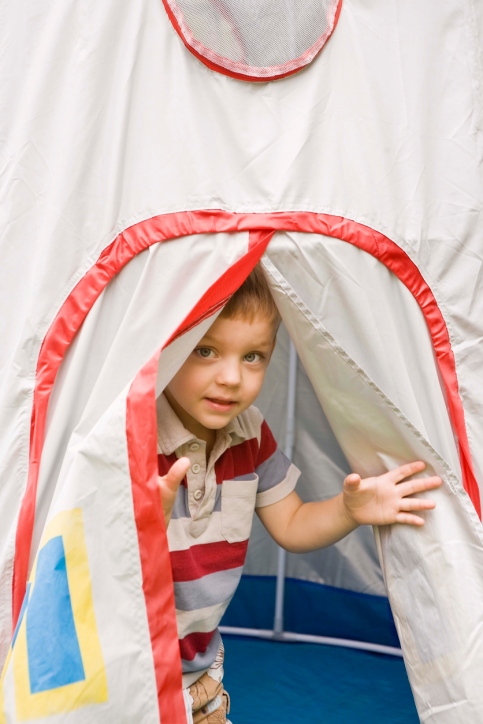According to the Sensory Processing Disorder Foundation, 1 out of 20 children experience sensory processing disorders. To put it simply, children all react in different ways to sensory input. Some children seek extra stimulation, while others avoid stimulation and seek places to calm themselves. In the process of trying to help our children find the right level of stimulation, sometimes anxiety or a breakdown results. Many children with disabilities have difficulty communicating their need for more or less stimulation, so it is our job as parents and specialists to learn about their needs and how we can help to meet them.
How Can We Use Sensory Hideouts?
You will find sensory hideouts in homes, schools, and clinics all over the United States in the form of playhouses, tents, and other spaces. These are small, cozy, and isolated spaces where children can go when they feel overwhelmed to calm themselves down. Here are a few creative ways you can create a sensory hideout in your home:
- You can make a sensory hideout from almost any space as long as it is away from noise and distractions. Consider setting up a small tent, draping a blanket over a table, or isolating part of a room with a curtain. Ball pits and kiddie pools are great options for smaller children since they create clear boundaries.
- After you’ve chosen your space, equip it with pillows, blankets, floor mats, and weighted blankets or pads. The aim is to make the space as cozy and calming as possible.
- Now it’s time to consider lighting. You don’t want bright lights that may overstimulate your child. You can add Christmas lights for a fun yet soft effect. Or, consider keeping a flashlight in the space so your child can control the light. LED lights are also a great option, since they can be adjusted for patterns and color.
- Add some books or charts on emotions so your child can learn to identify and recognize the emotions your child is feeling. Crayons and paper are also a great thing to add for your child to put their feelings on paper.
The Connections Therapy Center
The Connections Therapy Center is a top therapy center serving families of children and adolescents with disabilities. Our team consists of the leading experts in the fields of pediatric speech, occupational therapy, speech-language pathology, and behavior sciences. We offer intensive, hands-on therapy for children and adolescents as well as resources for families. We are real therapists helping real families with real issues. If you are concerned about your child’s behavior, take a moment to fill out our quick questionnaire. If you’d like to schedule an appointment, call 202-561-1110 (Washington, D.C. office) or 301-577-4333 (Lanham office) or contact us via our website. Want to keep up with our latest news and blog posts? Follow us on Facebook, Twitter, Google+, and Pinterest.

